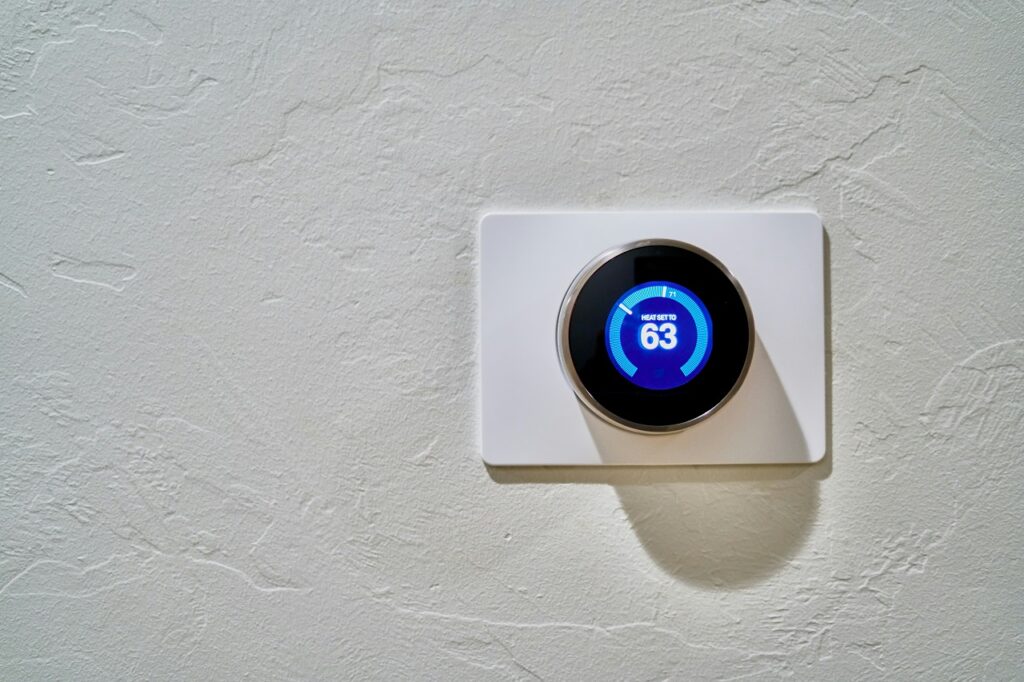In recent years, smart thermostats have emerged as a popular and valuable addition to modern heating, ventilation, and air conditioning (HVAC) systems. These advanced devices offer homeowners unprecedented control over their home’s temperature and energy usage, improving comfort and minimizing energy waste. By upgrading to a smart thermostat, you can harness the power of modern technology to create a more comfortable living environment, save on your energy bills, and reduce your environmental impact. We will discuss the various benefits of smart thermostats, explore how they work with your existing HVAC system, and provide practical tips for selecting and installing the right smart thermostat for your home.
Optimizing HVAC Performance with Smart Thermostats
A primary advantage of smart thermostats is their ability to optimize your HVAC system’s performance. By utilizing advanced algorithms and sensors, these devices can attain a more precise understanding of your home’s heating and cooling needs. This enables them to automatically adjust temperature settings in real-time, ensuring a comfortable living environment while maximizing energy efficiency.
Furthermore, smart thermostats can integrate with other smart home devices, such as occupancy sensors, air quality monitors, and smart vents. This holistic approach enables your smart thermostat to make even more informed decisions about when to heat or cool your home, effectively balancing comfort and efficiency.
Selecting the Right Smart Thermostat
There are numerous smart thermostats available on the market, each with its unique features and functionalities. When choosing the right device for your home, consider the following factors:
- Compatibility: Ensure the smart thermostat is compatible with your existing HVAC system, as well as other smart home devices you may currently use or plan to integrate in the future.
- Learning Capabilities: Some smart thermostats offer self-learning features that help them adapt to your routine and preferences more effectively. This can result in more personalized and efficient temperature settings over time.
- Energy Reports: Many smart thermostats provide detailed energy usage reports, allowing you to track your heating and cooling patterns, identify inefficiencies, and make informed decisions to optimize your energy consumption.
- Design and User Interface: Evaluate the aesthetic design and user interface of the smart thermostat, as it will be a prominent fixture in your home. Consider whether the device’s appearance complements your home’s décor and whether the interface is intuitive and user-friendly.
Installation and Integration
To get the most out of your smart thermostat, proper installation and integration with your existing HVAC system are critical. While some homeowners may feel comfortable with self-installation, it is generally recommended to work with a licensed HVAC professional for the following reasons:
- Ensuring Proper Wiring: Installing a smart thermostat often involves more complex wiring than traditional thermostats, and it is crucial to get it right to avoid potential damage to your HVAC system or the device itself.
- Assessing System Compatibility: A professional can accurately assess your HVAC system’s compatibility with the smart thermostat and ensure seamless integration to maximize its efficiency and benefits.
- Customizing Settings: An HVAC expert can help configure and optimize the settings of your smart thermostat, tailoring it to your home’s unique heating and cooling needs.
- Providing Guidance: A professional can demonstrate the smart thermostat’s features, explain how to use the mobile app or web interface, and offer advice on maximizing energy savings and comfort.
Maximizing Energy Savings with Smart Home Integration
Integrating your smart thermostat with other smart home devices can further enhance its energy-saving potential. Here are some examples of how connecting various smart devices can optimize your home’s energy efficiency:
- Smart Lights: Synchronize your smart lights with your smart thermostat’s schedule, ensuring lights are turned off when you’re away from home or during designated energy-saving periods.
- Smart Blinds or Shades: Automate your smart blinds or shades to open or close based on the sun’s position, time of day, or room occupancy, helping regulate your home’s temperature without over-relying on your HVAC system.
- Home Automation Hubs: Pair your smart thermostat with a home automation platform like Amazon Alexa, Google Assistant, or Apple HomeKit. These systems allow for seamless voice control of your thermostat and integration with other smart devices, creating a truly connected and efficient smart home ecosystem.
Conclusion
Investing in a smart thermostat for your home can provide significant benefits in terms of comfort, energy efficiency, and convenience. By understanding the features and advantages of these devices, you can make an informed decision about selecting, installing, and integrating the right smart thermostat for your home. If you’re ready to upgrade your HVAC system and embrace the benefits of smart thermostat technology, our team at Air Plus Heating and Air is here to help. Contact our HVAC company in Cathedral City today to discuss your needs and learn how our expertise can guide you toward a more comfortable and energy-efficient living space.





